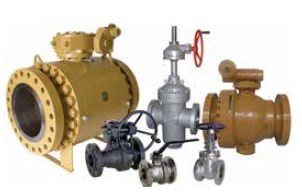The results of both API 622 and API 624 tests are so important to both end users and manufacturers, as part of the API 624 documentation package. This documentation package can be reviewed by end user corporate engineering for approval and suitability for use where Low E valves are required. While a pass/fail result in API 624 requires no more than 100 ppm leakage without packing gland bolting adjustment, some companies are already looking at
performance well below the 100 ppm threshold for their approval process. Multi-year performance is critical as the US EPA has defined low emission valves as valves that meet the following definition:
Certified Low-Leaking Valves shall mean valves for which a manufacturer has issued either: (i) a written guarantee that the valve will not leak above 100 parts per million (ppm) for five years; or (ii) a written guarantee, certification or equivalent documentation that the valve has been tested pursuant to generally-accepted good engineering practices and has been found to be leaking at no greater than 100 ppm.
One area requiring much more scrutiny is proper loading of the API 622 packing installed in the valve for the API 624 test. Achieving the required loading to properly seat the “Certified Low Leaking Packing” is crucial to obtaining the sealing performance at the low leak rates required to successfully pass API 624 testing. The gland pressure exerted on the packing is a function of packing type, sealing requirement and the pressure being sealed. Therefore, valve pressure class and stuffing box geometries need to be analyzed for the application of proper bolt torque. Also, gland flange stud size and the thread and nut lubricant also impact the force applied to the gland and are variables that also need to be included in the analysis to create proper gland stress for API 624 low emission sealing.

The gland stress acting on the packing that produces ring compression along with radial sealing forces is much more significant in low emission applications. Gland plates and gland studs need to be analyzed for the additional stress required by low emission packing. Also, the gland nose and gland flanges need to be reviewed as it is important that they remain perpendicular to the stem. Non-perpendicular gland flange plates can result in improper sealing.
A Gland Flange that is not perpendicular to the stem centerline can result in uneven loading of packing, leading to increased leakage and additional stem friction.
To apply the proper gland stress, a torque wrench must be used to apply an accurate and repeatable load. A “Crows Foot” type wrench is often needed to access the nuts especially on small forged valves. The increased moment arm should be added to the calculation because of the increased distance when it is used.
The industry practice prior to the release of API 624 is for a valve to be only capable of meeting low fugitive emission when prepared for testing, such as in the ISO 15848-1 test. In ISO 15848-1 type testing, there are few limitations of special preparation to the valve before the test beyond mechanical modifications. However,
in API 624, it is specified that only a verification of torque is allowed prior to testing of the valve. API 624 further
elaborates for the testing center to document all pre-test activities.
ISO 15848-2 Valve production testing clearly stipulates that the stem/shaft seal adjustment shall be “adjusted
according to the manufacturer’s instruction.” Combining this clause with the fact that ISO 15848-2 only requires only 5 cycles ensures the valve is capable of meeting low emission requirements AFTER adjustments. It does not necessarily qualify a valve for adjustment free low emission performance.
However, API 624 requires a manufacturer to design a valve capable of passing a 310 mechanical and 3 thermal
cycle emission tests with only one gland torque verification prior to starting the test. The packing set must be installed correctly and properly consolidated prior to the API 624 test as no additional adjustments can be made throughout the test. Therefore, accurate and repeatable bolting practices as part of API 598 testing are critical to apply adequate load on the packing to achieve long-term, adjustment free low emission
sealing. It is important to understand that to perform the loading as outlined the proper and effective use of anti-seize/thread lubricants is not only important but required.
To read the full article, please contact the Editor, Stephanie Matas (s.matas@kci-world.com).




